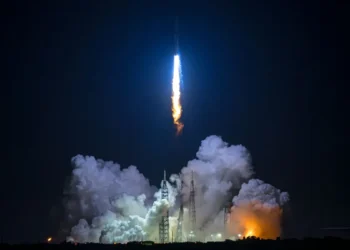In an age where technology is evolving at breakneck speed, power sources are also undergoing revolutionary changes. One of the most exciting developments is micronuclear batteries, which could soon transform how small-scale electronics are powered. Imagine having a battery that could run for decades without needing a recharge—a dream for anyone working with devices that operate far from the convenience of an outlet.
The Science Behind Micronuclear Batteries
Micronuclear batteries harness energy from the radioactive decay of isotopes, providing a reliable and long-lasting power source. These tiny yet powerful batteries are being designed to last for years, potentially even decades, thanks to the half-life of the radioisotopes they contain. Unlike chemical batteries that degrade over time, micronuclear batteries maintain consistent energy output, making them ideal for environments where regular battery replacement is impractical.
A striking example of nuclear battery technology in action is NASA’s Curiosity Rover, the first Martian rover to ditch solar panels in favor of a more resilient power source. Curiosity relies on plutonium-238, which generates heat as it decays. That heat is then converted into steady electricity using thermoelectric devices, producing 110 watts of power—a crucial advantage on a planet where dust storms could easily incapacitate solar panels.
The New Frontier: Micronuclear Batteries for the Smallest Devices
While the Curiosity Rover demonstrates the potential of nuclear power for space exploration, a new frontier is emerging for micronuclear batteries that cater to much smaller needs. A team of researchers at Soochow University in China recently developed a micronuclear battery powered by the isotope americium, commonly considered nuclear waste. Their breakthrough, published in Nature, revealed that the efficiency of these tiny powerhouses was boosted by an astounding 8,000% compared to previous models.
Unlike the thermoelectric methods used by space rovers, this new type of micronuclear battery converts the energy from alpha particles emitted by americium directly into electricity. These alpha particles, which would typically dissipate their energy rapidly, are captured by embedding the americium in a polymer crystal. Paired with a photovoltaic cell, this setup efficiently transforms the emitted light into power. All of this technology is contained within a millimeter-sized quartz casing, making the battery both compact and safe for use in sensitive applications.
Real-World Applications: From Wearables to Medical Devices
Despite their tiny size, these micronuclear batteries offer an incredible range of potential applications. For instance, Chinese startup Betavolt is exploring the use of nuclear batteries to power wearables and medical devices like pacemakers. The long operational life of these batteries makes them particularly valuable for devices that must function reliably without frequent maintenance.
However, it’s important to note that these batteries aren’t intended for high-power demands. To put it into perspective, it would take approximately 40 billion of these micronuclear batteries to power a single 60-watt light bulb. But for many devices, such as sensors, medical implants, or even certain types of wearables, a tiny, long-lasting battery could be a game-changer.
While the future looks bright for micronuclear batteries, their current cost remains a challenge. Since the materials required, like americium, are not naturally occurring, manufacturing these batteries on a large scale for high-power applications—such as spacecraft or heavy-duty electronics—would be prohibitively expensive. However, as research continues and more efficient production methods are developed, the potential for these batteries to revolutionize energy storage on the micro-level remains a tantalizing prospect.











